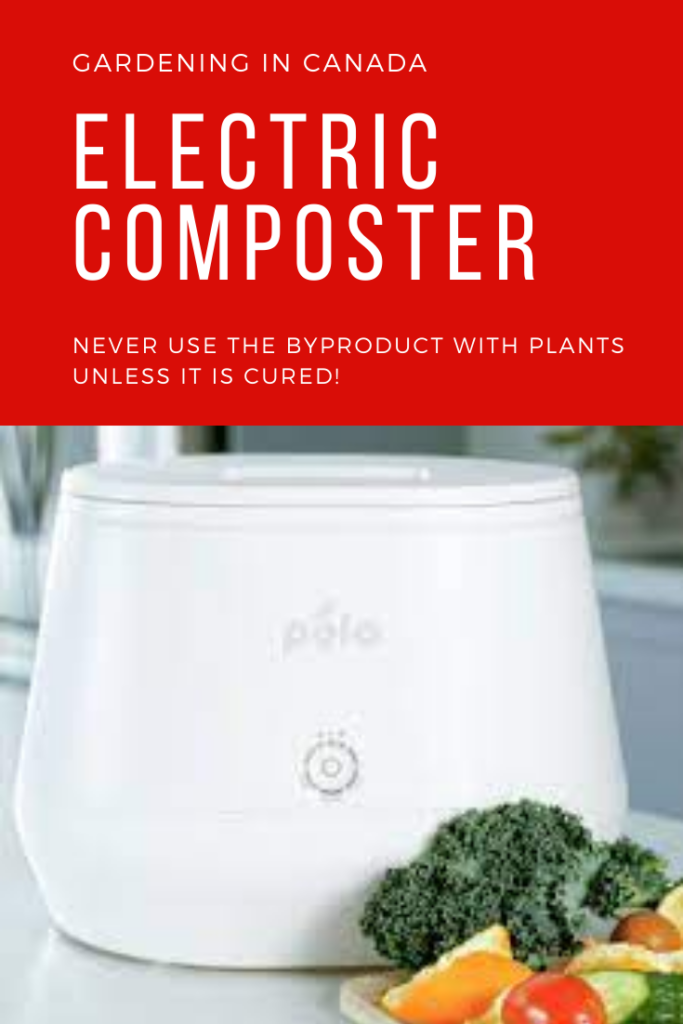- Canada’s Growing Zones Are Changing 2024 - January 12, 2024
- Attracting Wildlife To The Garden - May 16, 2023
- How To Garden Near A Septic Tank - May 9, 2023
An electric composter, also known as an electric compost bin or electric composting machine, is a device that uses electricity to accelerate the process of decomposition of organic waste materials. These waste materials, such as food scraps, yard trimmings, and paper products, are transformed into a nutrient-rich soil amendment called compost.
If you are new to this blog my name is Ashley and I am a soil scientist. I am located in a Canadian Zone 3 and a USDA Zone 4. I write articles, make YouTube videos, Instagram & Facebook posts all designed for Canadians and Cold Climate gardeners using science-based methods. If you are looking for anything specific be sure to let me know in the comments down below.
Why Were Electric Composters Designed?
Electric composters are designed to be more efficient and convenient than traditional composting methods. They typically have a compact size, making them suitable for use in small spaces such as apartments or patios. They also have a closed system, which helps to reduce odor and pests.
How To Use An Electric Composter?
To use an electric composter, organic waste materials are placed into the machine, and the composter is turned on. The machine then uses electricity to power a heating element and a fan, which help to circulate air and maintain the optimal temperature and moisture level for decomposition. Some electric composters also have a built-in shredder, which helps to break down the organic materials into smaller pieces, allowing for faster decomposition.
Essentially it is a dehydrator combined with a food grinder. If you wanted to DIY the electric composters byproduct this would be the way to do it. This is the perfect composter for anyone that has a colder climate where the compost generally freezes over winter.
How Long Does Electric Composting Take?
The process of electric composting usually takes about two to four weeks, depending on the type and quantity of materials being composted. Once the composting process is complete, the nutrient-rich compost can be used in a variety of ways, such as as a soil amendment in gardens or as a natural fertilizer for plants.
For my household, the speed at which the composter is filled really comes down to the season. During the fall harvest, I can fill the electric composter daily. Mid-winter when I am using a lot of pre-canned or frozen food it can take two weeks.
Once the composting process takes place the total time is 4-6 hours and is done pretty quickly.
Drawbacks Of Electric Composting
Cost
However, electric composters do have some limitations. One of the main drawbacks is their cost. Electric composters tend to be more expensive than traditional composting methods, and they also require a constant source of electricity to operate, which can add to the overall cost. Additionally, some electric composters have a small capacity and may need to be emptied frequently, which can be inconvenient for some users.
The byproduct Is Not Plant Ready
I would avoid planting plants directly into the byproduct. This needs to be further degraded using earthworms, regular composting methods, or incorporation into the soil. Planting directly into this can result in nutrient deficiencies in the plant.
Here are some things to consider for electric composters:
- Research different electric composters: There are many different brands and models of electric composters on the market, so it is important to research the different options to find one that meets your specific needs and budget.
- Determine the size and capacity of the composter: Consider the amount of organic waste you generate and choose a composter with a size and capacity that is suitable for your needs.
- Consider the cost of operation: Electric composters require a constant source of electricity to operate, so be sure to consider the ongoing cost of electricity in addition to the initial purchase price.
- Determine the location for the composter: Electric composters can be placed in a variety of locations, such as on a patio or balcony. Choose a location that is convenient and has access to a power outlet.
- Learn how to use the composter: Each electric composter is slightly different, so be sure to read the manufacturer’s instructions and learn how to properly use the composter.
- Collect and add organic waste materials: Start collecting organic waste materials such as food scraps, yard trimmings, and paper products to add to the composter.
- Monitor the composting process: Check the composting process regularly to ensure that the temperature and moisture level is optimal for decomposition.
- Use the compost: Once the composting process is complete, the byproduct should be added to a compost or worm bin to be cured.
Overall, electric composters offer a convenient and efficient way to transform organic waste materials into valuable resources. However, the cost and potential inconvenience of using an electric composter should be carefully considered before making a purchase. By using an electric composter, individuals and communities can reduce the amount of waste sent to landfills and contribute to the production of nutrient-rich compost that can be used to improve soil health and support the growth of plants.

